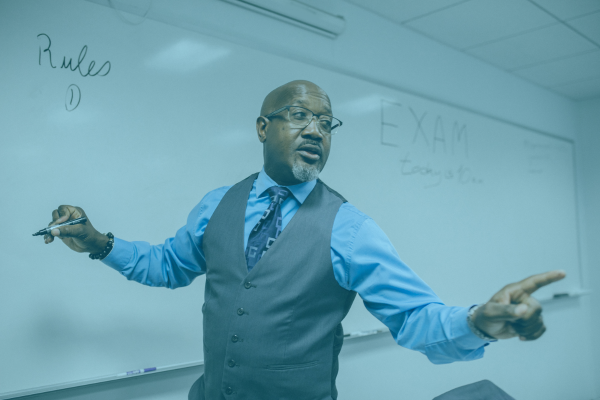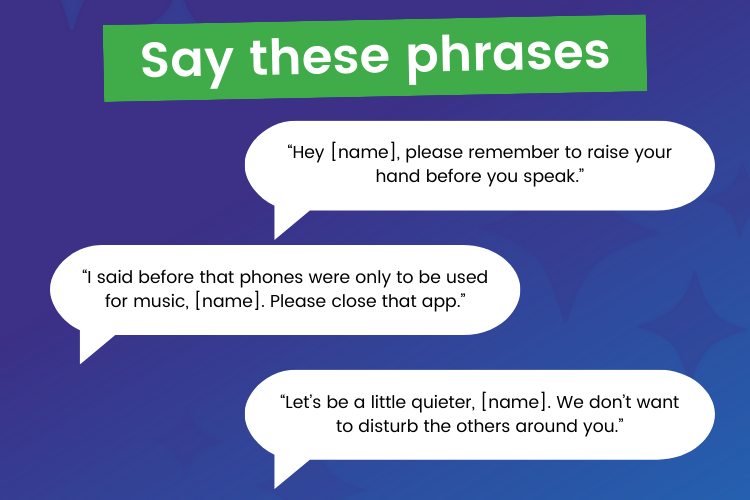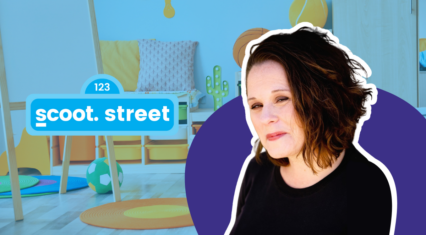Search
Get started
Log into your referral dashboard
While we all wish our classrooms could be full of students on their best behavior, we know that just isn’t possible.
When your students are misbehaving, what should you do as the substitute lead teacher? How do you de-escalate a situation before it gets out of hand?
Handling challenging student behavior isn’t easy, but we’ve got you covered!
Here are 6 strategies for how to handle challenging student behavior in the classroom that aren’t just “remain calm.”
1) Lay your cards on the table
When the teacher is out, students often feel like having a sub means having a free day. Don’t let this mentality affect you!
If you start the day expecting things to go bad because you’re “just the sub”, you’re setting yourself up for failure. Remember that you are here to reach learning goals and supervise a full classroom.
Instead of feeling defeated, think about your expectations and what you consider to be positive behavior. You’ll need to fully explain this to your students before you begin the lesson or activity.
Set expectations to avoid challenging behavior
First, introduce yourself to everyone. Explain that you’re the substitute teacher and that you’re here to help out while the teacher’s gone.
Second, go over your behavioral expectations. What do you consider good and bad behavior? Are there any rewards or consequences for bad behavior?
- Examples of positive behavior: Raising a hand to speak and staying on task
- Examples of disruptive behavior: Interrupting someone when they’re talking or being distracted on their phone during class
Next, tell your students that you want this day to go as smoothly as possible and that you hope everyone feels the same. It’s best to be open with your students; they will respect you more for it.
Finally, explain anything else you’d like everyone to know. Use this time to share something personal about yourself so you can form a bond with your students.
Remember that things that may be obvious to you are not always obvious to the students. You’ll need to explain everything to the whole class in order for strategy 2 to work.
2) Face the first problem head-on
So you’ve explained your classroom expectations, now what? Unfortunately, this doesn’t mean that the rest of the class will run smoothly. Handling challenging student behavior is part of being a teacher.
You need to follow through with the rules you stated at the beginning of class.
For example, if you said that you don’t want students to interrupt you while you’re talking and a student does, gently but firmly remind them of your rules.
Phrases you can say
Here are some phrases you can say when a student doesn’t follow the expectations you’ve set:
- “Hey [name], please remember to raise your hand before you speak.”
- “I said before that phones were only to be used for music, [name]. Please close that app.”
- “Let’s be a little quieter, [name]. We don’t want to disturb the others around you.”
Notice that all of these phrases use the student’s name. This makes it clear that you’re talking to them.
Use these phrases and let your students know that you’re serious about your expectations of them!
Other classroom management tips
There are also ways of correcting misbehavior that don’t involve calling out a student in front of everyone!
You can walk around the classroom and stand close to the student misbehaving. This is a great nonverbal classroom management strategy.
3) Pick your battles
Some issues are an uphill battle and since you have limited time, you should pick the issues that matter most to you. Don’t shy away from compromising when you need to!
Below, we’ve listed out some ways to compromise with your students while still getting what you want.
Don’t expect to win the cell phone war
Most, if not all, students have smartphones. And if you’re subbing for older students, then odds are they all have smartphones and will want to use them.
Your first instinct might be to completely ban cell phones from the classroom. However, enforcing this rule and managing a class full of annoyed students as a result could prove to be more trouble than it’s worth.
Instead, tell your class that you’ll let them quietly listen to music while they do their work. You’ll encourage students to do their work and you’ll keep them from getting too distracted – it’s a win-win!
If you do catch your students checking their phones for reasons other than music, give them a warning. Then let them know that if it happens again, you’ll be writing names down on a list for the full-time teacher.
Encourage group work
If you have a particularly talkative group of students, it might be best to allow them to talk – quietly!
Allow group work in small groups or pairs and allow the students to pick their partners. Even the most challenging students will want to partner up with a friend to get work done.
You can also use a noise monitor to maintain a quiet noise level. We like this one from Calm Counter, which allows you to set your microphone sensitivity and can be used on any computer.
Project the Calm Counter on a screen so everyone can see how quiet or loud they are!
Pick and choose your battles
Part of your job as a substitute teacher is to decide on which issues matter the most.
Above all, you just want to make sure that you’re not giving your students a reason to be disruptive or challenging. Do not match the difficult students’ behavior by shouting or fighting back.
Screaming or laying your hands on a student is absolutely unacceptable. No matter how difficult someone is being, you should never escalate the situation with verbal or physical violence.
Use open communication and kindness towards your students when handling challenging student behavior. Compromising shows the students that you care about their opinions and what they want.
4) Build relationships with your students
Show that you care. Building relationships as a substitute teacher is a preventative strategy to show students you are there to help and not just to be another authoritarian in their lives. Here are 2 practicals to keep in mind.
Listen with empathy
Ultimately, all behavior is communication. Try to determine the cause. Meet privately with the student to talk to them.
Then really listen! Give them 2 minutes of your undivided attention where they can talk about anything. Students love being heard and respected. If they see that you’re 100% present, they may begin to trust and comply better.
Respond by not blaming them. Instead, highlight how you noticed there was a problem and you want to help solve it. Be objective and look for a teachable moment!
Cheer on your students
“Child behavior experts say that the best way for teachers to manage behavior in the classroom is through praise.
– Child Mind Institute
Pay attention to students who are showing good behavior, instead of pointing out students who are being disruptive.
For younger kids, call out the good behavior and use their name when possible. Perhaps mention a reward they’ll get.
- “Kevin is sitting down so quietly.”
- “Students who are all packed up and sitting quietly will get to go play first.”
For older students, take some time after class or during quiet work time to talk with them individually about their behavior.
Also, be quick to praise your “difficult” kid once they start to pick-up good behavior!
Whether you work with pre-K or high school, help your students fight negative mindsets by being their friend, instructor, and biggest cheerleader!
5) Don’t be afraid to remove a challenging student
Removing a particularly challenging student is a last resort option. However, if a student’s behavior is repeatedly disrupting others’ academic success, you may have to remove the student.
Before removing a student for bad behavior
Since this is a last resort option, make sure you’ve done all of the following before having a student removed:
- Given them several verbal warnings about their behavior.
- Explained that their disturbance is affecting other students from achieving their learning goals. You should also explain that their behavior is unacceptable and there will be consequences.
- Asked the student to stand outside the door for several minutes.
If, once you complete these 3 steps, the student’s behavior has not changed, you may call campus security to have them escorted out of the room.
If a situation ever escalates to the point where you need campus security to remove a difficult student, you will have to file a form that documents everything. You must also proceed to strategy 6 below.
6) Tell administration about bad behavior
As a sub, you likely have and will run across various types of challenging student behaviors. And you know that consequences are necessary when dealing with more difficult students.
As a result, you must let school administration know what happened. What they choose to do with the disruptive student is up to them but it is your responsibility to notify the school of this.
Do all the paperwork and make sure to be as detailed as possible. Mention the students involved, what exactly happened, how you tried to handle the situation, and how you eventually had to call campus security to escort the student out.
It would also be best to keep a copy of this document just in case you need it in the future.
Update the teacher on behavioral issues
You should always leave a note for the teacher at the end of the day, even if nothing eventful happened. But it’s even more critical to leave a note after an eventful day.
Your note must include everything you wrote in the paperwork with school administration.
Have compassion
Have compassion for your students and yourself.
Remember that many students often act out in school because of something else they’re struggling with. Student outbursts are tests to pass, not a show of disrespect. It’s a cry for help, so don’t take it personally.
Some teachers try all year, but aren’t able to reach or help a particular student. That isn’t failure! Failure is when you stop caring about students and stop trying to help them.
This challenging behavior is not a reflection of you
Handling challenging student behavior isn’t easy but just remember that these difficult students are not a reflection of you and your teaching abilities.
Challenging behaviors are difficult to manage, regardless of your skill and experience. Oftentimes, it takes a long time to see even an inch of growth. You did great! Your kindness and patience has already left a mark on the student.
Feel proud of yourself for having survived a difficult day!
Once your tough day is over, head home, kick your shoes off and relax. Put this day and its frustrations behind you because you know that you’re an incredible sub doing incredible work!











![How to write a strong substitute note [+free template!]](https://scoot.education/wp-content/uploads/2022/05/thank-you-426x235.png)


